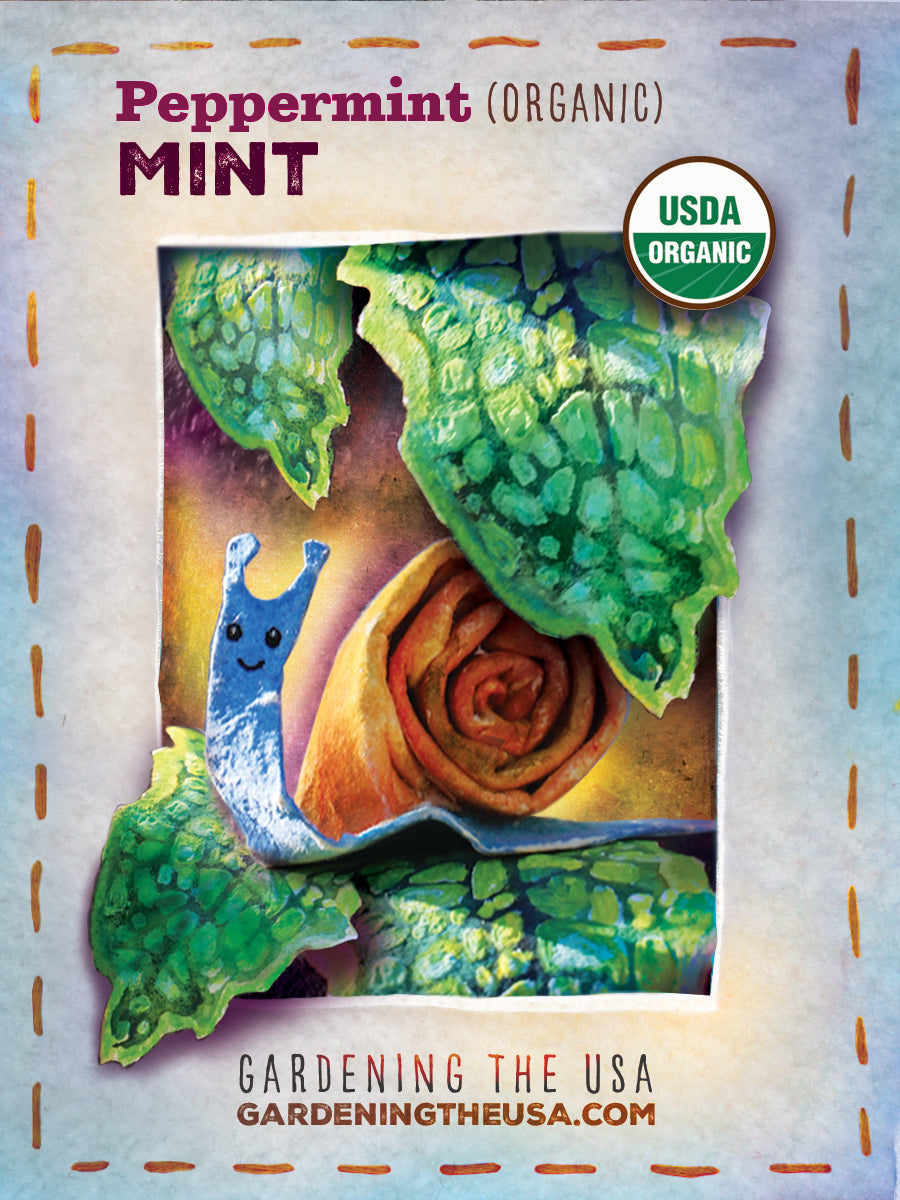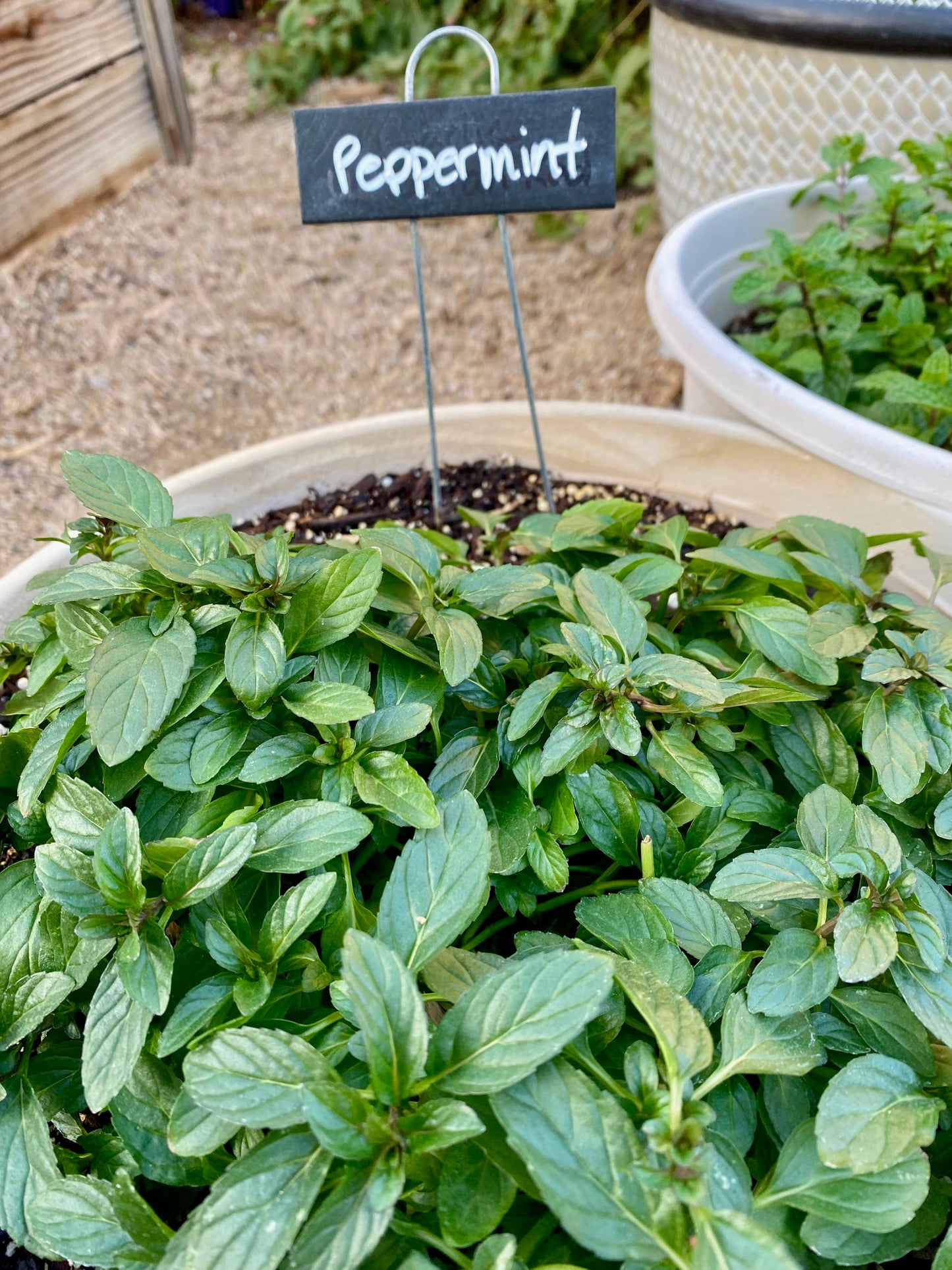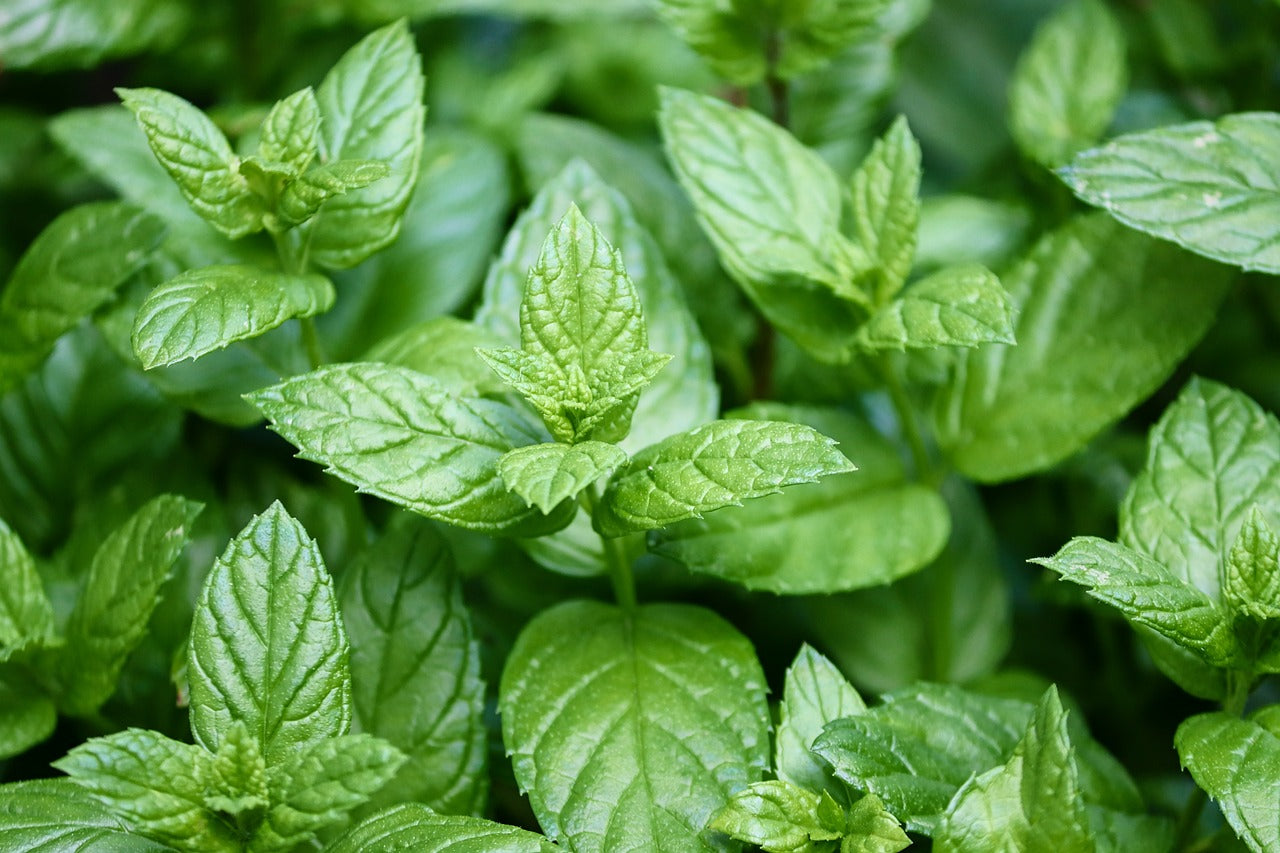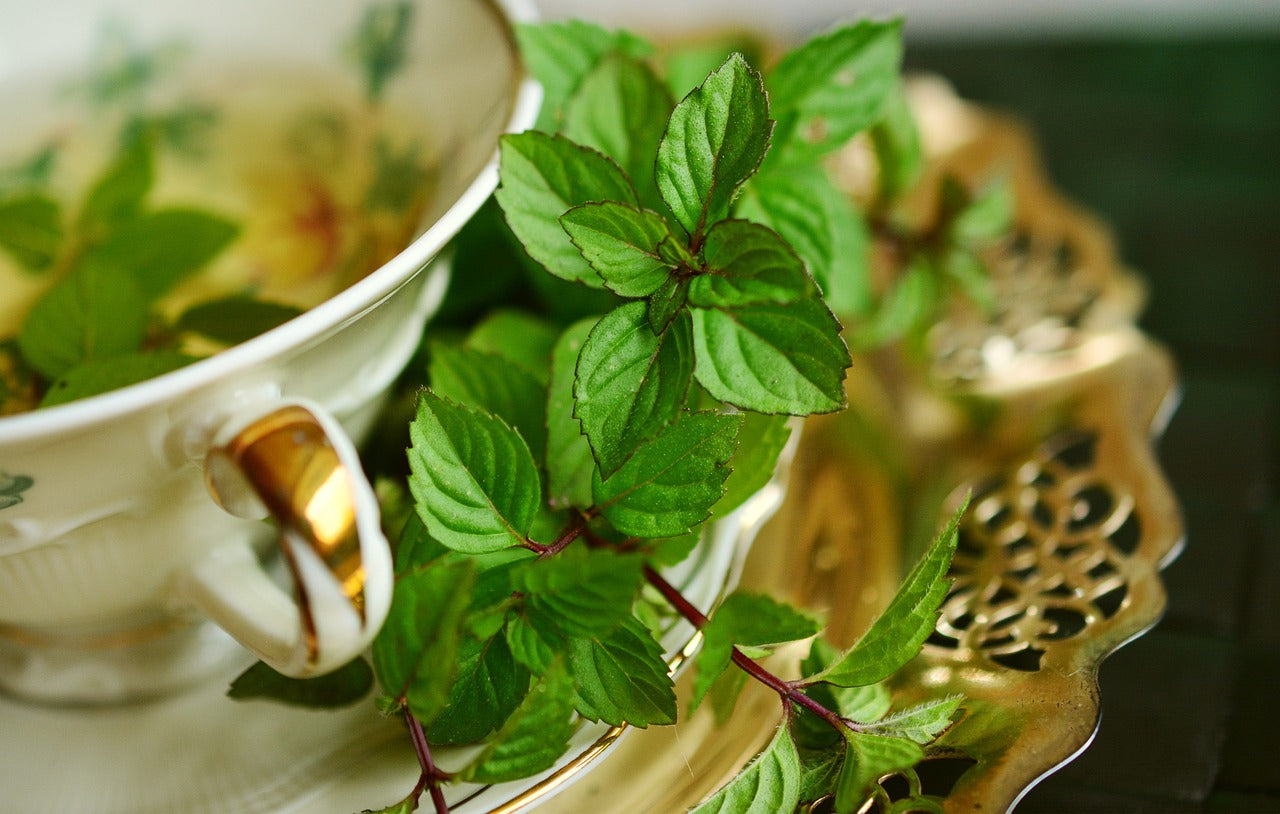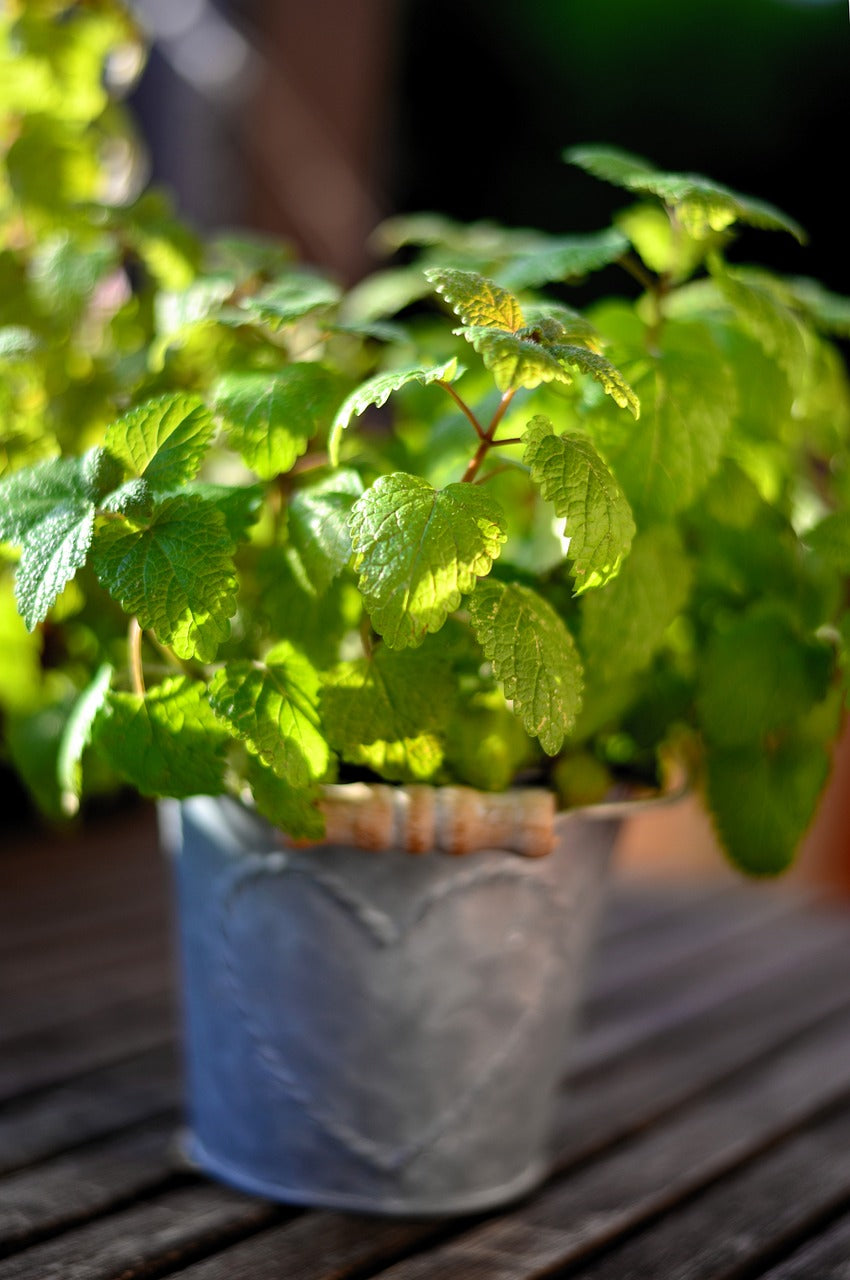Mint, Peppermint
Mint, Peppermint
Germination: 7-14 days
Planting Instructions
Set one or two seeds in a shallow 1/4 inch hole in moist seed-starting mix. Covering with a dome or plastic wrap will help it germinate more quickly. For spring planting start your seeds 6 weeks before the last frost. The ideal soil temperature for growing mint is 75-85 degrees, and it is frost hardy.
Care:
Mint is a perennial, and can reach 3' tall in a garden. It likes to spread so we recommend that you confine it to a container or plant it where you won't care about its invasiveness.
Mint likes full sun but can grow in partial shade. In hotter climates providing afternoon shade is strongly recommended. It prefers moist, well-drained soil rich in organic matter. Mint needs consistency moisture, especially in hot weather so avoid letting the soil dry out completely.
Strongly aromatic, mint can be used in cooking, drinks, salads, and tea.
History
Mint has a very long history so we shortened it a bit in the name of sanity for all!
Mint dates back over 3,500 years with evidence that ancient cultures like the Romans and Greeks used it for various reasons. Medicinally it was used to treat stomach aches, nausea, chest pains and other ailments. It was used as a flavoring in various dishes, drinks, and desserts. The original American Colonies imported the product from Britain and it became big business in the 1700's. In Greek mythology, mint was a beautiful river nymph named Minthe, who fell in love with Hades but was turned into a plain-looking plant by jealous Persephone. Moral of that story is don't fall in love with the devil!!
Modern applications include mouthwash, toothpaste, gum, chocolate, tobacco, pharmaceuticals, fragrances and more.
- Mint comes in over 30 varieties
- Ancient Romans and Greeks used mint to flavor cordials and fruit compotes also for baths and perfumes
- Ancient Hebrews used to scatter mint over the synagogue floor for its scent
- The common garden mint is spearmint
- The term "mint" is an umbrella term for the Mentha plant family that includes spearmint, peppermint, orange mint, and more
- Mexicans call mint Yerba Bueno or good herb
- Mint Plants originate in the Mediterranean region
- Mint has been found in Egyptian tombs from as far back as 1000 BC!
- The US produces 70% of the Worlds peppermint and spearmint
Why Is That Cute Snail Smiling?
Even though you won't find a smiling snail in a patch of mint, because mint repels snails, you will find them in the garden. Although most people think snails are a pest this snail has a secret he'd like to share! Like earthworms, snails actually build healthy soil. Snails can actually do 33% of the decomposition of organic matter in the garden. They generally head for brown dead or dying matter (however, they are also known to completely decimate good healthy plants given the opportunity!). In some cases, like worm castings, snail poo makes a mineral and nitrogen rich contribution to the soil. Some case studies show that, where soil nitrogen was very low, snails were important to the nitrogen cycle. Interesting fact: snails that feed on lichens that penetrate rocks (endolithic lichens) ingest rock and lichen and their poo contributes 11% of soil nitrogen inputs and 18% of soil creation in the habitat.
Snails attract other wildlife to the garden that will feed on them, and wildlife diversity is good for any ecosystem! They're also a useful indicator to scientists that the ecosystem is healthy! So that snail has a great big smile - he's a useful little pest!
Share
